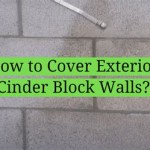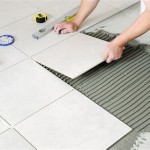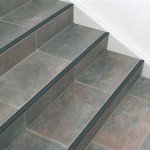Removing Vinyl Asbestos Tile: A Comprehensive Guide
Vinyl asbestos tiles (VATs) were once widely used in homes and commercial buildings due to their durability and affordability. However, they contain asbestos, a hazardous material that can cause serious health issues. If you are planning to remove VATs from your property, it is crucial to follow safety precautions and proper removal techniques to minimize exposure to asbestos fibers.
Identifying Vinyl Asbestos Tiles
Before attempting to remove VATs, it is essential to confirm their presence. Here are some characteristics to look for:
* Age: VATs were commonly installed from the 1950s to the 1980s. * Size: They are typically 9x9 inches or 12x12 inches. * Texture: They may have a smooth or slightly rough surface, sometimes with a marble-like pattern. * Backing: VATs have a black or dark gray backing made of asphalt or felt.Safety Precautions
Asbestos fibers are microscopic and can easily become airborne. To prevent exposure:
* Wear appropriate personal protective equipment (PPE), including a respirator, gloves, and protective clothing. * Keep the area well-ventilated. * Seal off the work area from the rest of the building with plastic sheeting. * Wet down the tiles before removing them to minimize dust.Removal Techniques
There are two primary methods for removing VATs:
1. Dry Removal
* Score the tiles using a utility knife or a scoring tool. * Pry up the tiles using a crowbar or pry bar. * Remove the tiles and place them in airtight plastic bags for disposal.2. Wet Removal
* Soak the tiles in water or a wetting agent for several hours. * Use a stripper or scraper to remove the softened tiles. * Remove the tiles and place them in airtight plastic bags for disposal.Disposal
Asbestos-containing materials must be disposed of properly. Contact your local waste management authority for guidance on approved disposal methods in your area. Some options include:
* Landfill: VATs can be disposed of in designated asbestos landfills. * Incineration: VATs can be incinerated in high-temperature facilities.Restoration and Clean-Up
Once the VATs are removed, the area must be thoroughly cleaned to remove any remaining asbestos fibers:
* Vacuum the floor and surfaces with a HEPA-filtered vacuum cleaner. * Wipe down surfaces with a damp cloth. * Remove any remaining debris and dispose of it properly. * Hire a professional asbestos abatement company for a final clearance test to ensure the area is safe.Conclusion
Removing vinyl asbestos tiles requires careful planning, safety precautions, and proper execution. By following the steps outlined in this guide, you can minimize exposure to asbestos and ensure the safety of your property and its occupants. Remember to contact qualified professionals if you are uncertain about any aspect of the removal process.

Asbestos Encapsulation Flooring A Comprehensive Guide

Asbestos Floor Tile Removal Guide

Removing Old Flooring And Asbestos Risk

Asbestos Floor Tile Removal Cost Guide For 2024

A Guide What To Do If You Accidentally Removed Asbestos Tiles

Asbestos Tile Removal Diy Renovation Demo

What Do Asbestos Floor Tiles Look Like Guide With Pictures Sampling Com

What Do Asbestos Floor Tiles Look Like Guide With Pictures Sampling Com

Asbestos Floor Tiles Testing Removal In Nj Ny Pa

Asbestos Floor Tile And Mastic Removal
Related Posts








